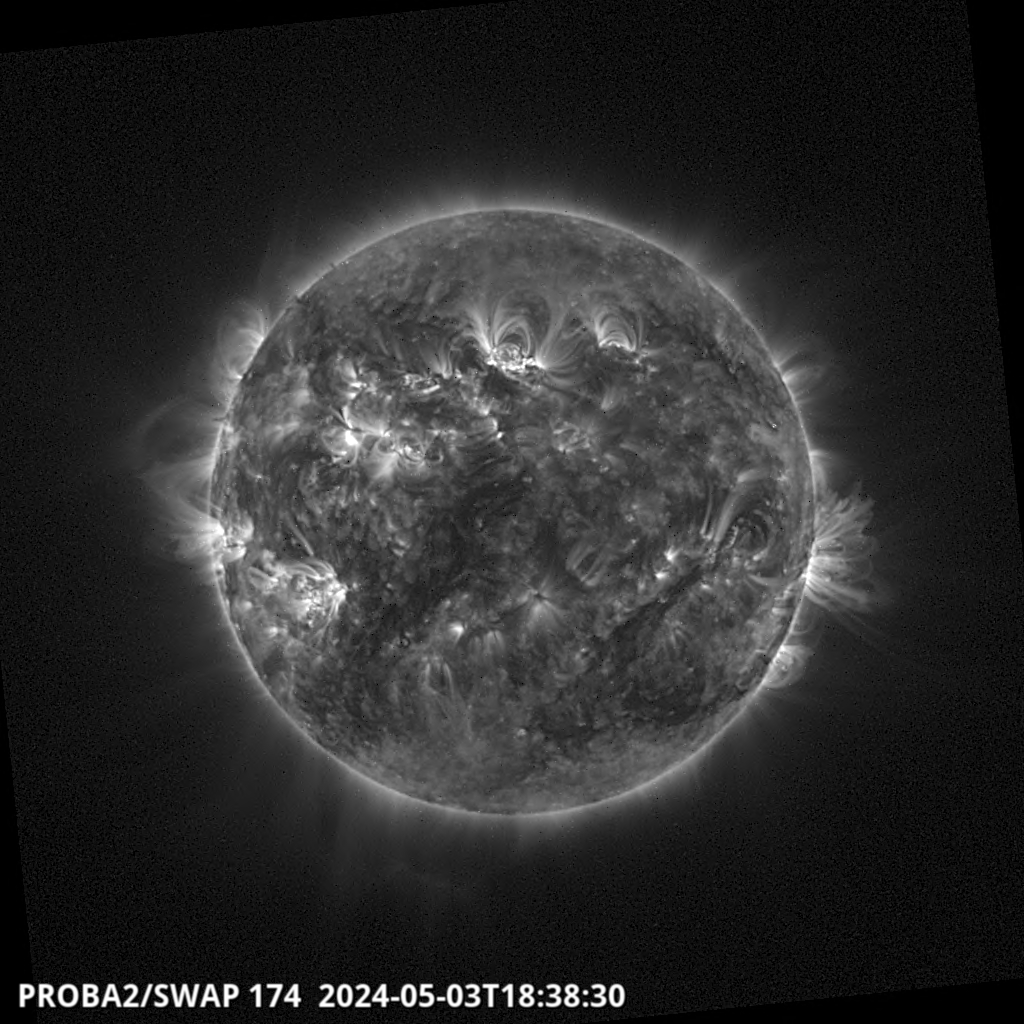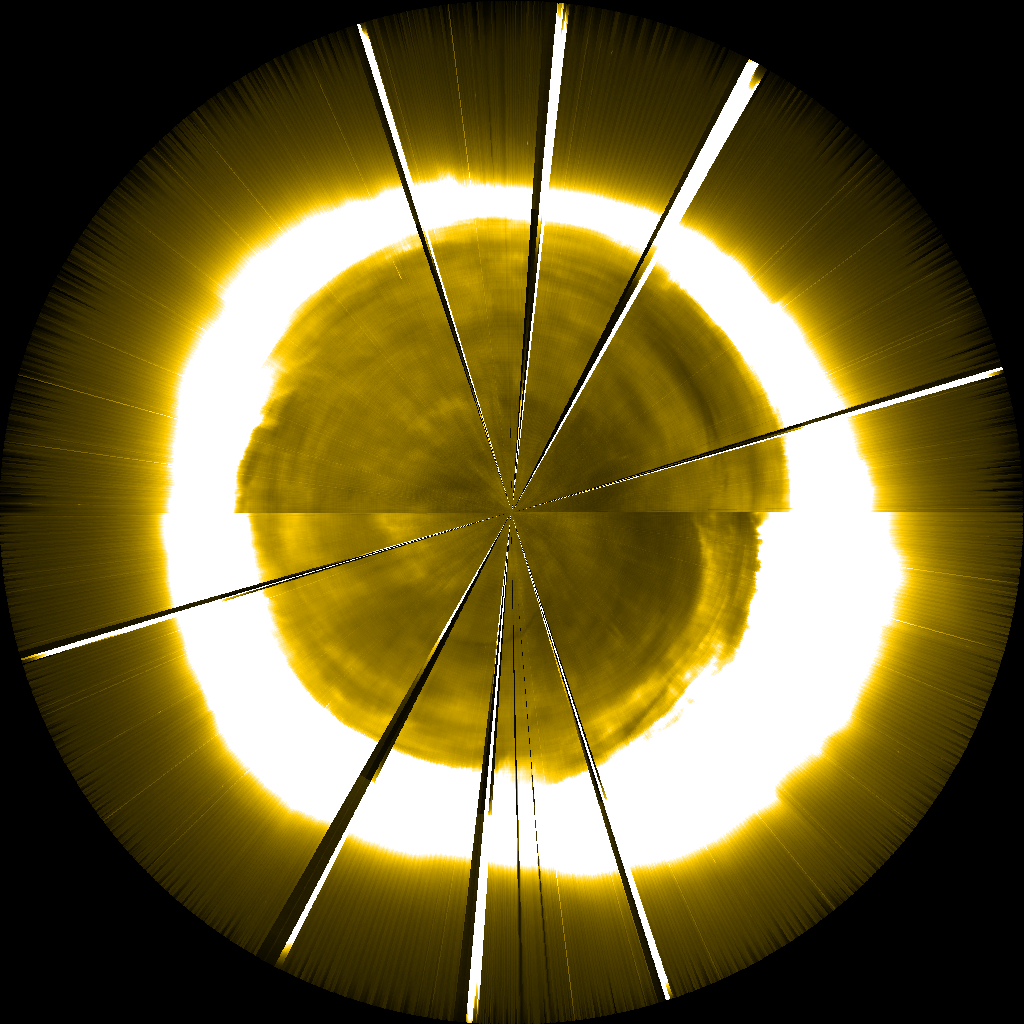Main menu
You are here
Evolution of a Coronal Cavity using SWAP, AIA, EUVI and LASCO data
Thu, 05/09/2019 - 09:33 — Elke D'Huys

 The image on the right shows a coronal cavity observed by PROBA2/SWAP along with its associated filament as seen in SDO/AIA data. Coronal cavities are believed to be the low-density cross sections of magnetic flux ropes. They are usually observed as dark (partial) ellipses at the limb in white-light and extreme ultraviolet (EUV) observations. Sometimes coronal cavities erupt from the Sun’s surface in the form of coronal mass ejections (CMEs).
The image on the right shows a coronal cavity observed by PROBA2/SWAP along with its associated filament as seen in SDO/AIA data. Coronal cavities are believed to be the low-density cross sections of magnetic flux ropes. They are usually observed as dark (partial) ellipses at the limb in white-light and extreme ultraviolet (EUV) observations. Sometimes coronal cavities erupt from the Sun’s surface in the form of coronal mass ejections (CMEs).
To better understand what triggers these solar eruptions, a team of scientists from the Udaipur Solar Observatory, India and from the Royal Observatory of Belgium, led by Ranadeep Sarkar, has pieced together observations over time of a coronal cavity that was witnessed in May-June 2010.

Sarkar and collaborators used observations from multiple vantage points (SDO/AIA, STEREO/EUVI, PROBA2/SWAP, and SOHO/LASCO) to track the cavity’s evolution from a quasi-static equilibrium in the lower corona to eruption into space. (See figure on the left)
This study was initiated in the frame of the PROBA2 Guest Investigator Programme. The SWAP observations were vital to this work because the large field-of-view of the SWAP instrument allowed the researchers to track the cavity up to almost 1.7 solar radii, whereas the field-of-view of the SDO/AIA telescope is limited to 1.3 solar radii.
The analysis is published in the Astrophysical Journal and this article was featured this week on the AAS Nova website, which is designed to highlight some of the most interesting recent results published in AAS journals.
Credits: Images reproduced from Sarkar et al. 2019, ApJ, 875, 101






